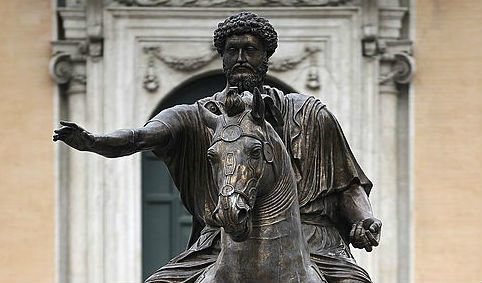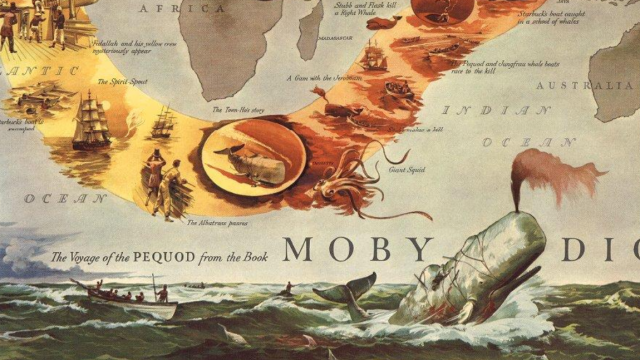How Stoicism can inspire fearless leadership

- Ryan Holiday is a bestselling author and host of the podcast The Daily Stoic.
- His new book, Courage is Calling: Fortune Favors the Brave, is the first in a series about the cardinal virtues of ancient philosophy.
- "Courage is Calling: Fortune Favors the Brave" fuses historical stories of courage with lessons from stoicism to explore how people can overcome fear.
The following is excerpted from Courage is Calling: Fortune Favors the Brave by Ryan Holiday in agreement with Portfolio, an imprint of Penguin Publishing Group, a division of Penguin Random House LLC. Copyright © Ryan Holiday, 2021.
Inspire Through Fearlessness
It was, for a man famous for gambles, perhaps his biggest one. On August 30, 1945, General Douglas MacArthur touched down in Japan. A decade before his bold stroke in Korea, this situation was just as dire. The fighting between the Allies and the Axis powers had only just ceased. In six years of world war, enemy boots had never trod on Japanese soil.
Every intelligence report warned of danger everywhere. Every adviser suggested he wait.
And yet MacArthur proceeded into the heart of enemy territory, unarmed. As he watched his staff holstering pistols before leaving headquarters for the flight to Tokyo, he had given the order. “Take them off,” he’d said. “If they intend to kill us, side- arms will be useless. And nothing will impress them like a show of absolute fearlessness. If they don’t know they’re licked, this will convince them.”
If one wonders how Japan so quickly made the unprecedented transition from suicidal warmonger to a peaceful, open nation and unwavering ally of the country that broke its back, this day is the answer. MacArthur landed and never betrayed a hint of fear or doubt. Every little gesture was deliberate—he ate without checking to see if his food was poisoned, he lifted martial law. He came in peace. He was completely confident.
It wasn’t quite the same as facing artillery fire, but it likely required even more discipline and commitment. Churchill called it the single most courageous act of World War II. Never once did MacArthur think of his personal safety, only the groundwork for peace and reconstruction.
How many lives did this save? How many guerrillas did it deter? How much resistance did it prevent? Every island in the Pacific had been a bitter, deadly fight, but Tokyo itself went with- out a shot. MacArthur’s entrance told them it was over . . . and they believed him. A more trepidatious commander could have never pulled it off, nor an angry or vengeful one.
Was there a moment—as they circled the runway, as he poked his head out of the plane for the first time, when he took the first bite of his dinner at a hotel staffed by people who would have killed him just days before—that MacArthur must have been terrified? That he might have wished he was back at headquarters? Of course, but for his men, for his country, for the cause of peace in the world, he had to put all that aside. He had to display complete and total fearlessness. He had to plunge ahead with poise.
All great leaders understand this. De Gaulle too practiced what he called bain de foule—plunging into the crowds of rapturous French citizens, bathing in their mutual spirit and love. Just as MacArthur’s aides had warned against these public displays, de Gaulle’s staff worried furiously about the safety of their leader, but he knew that it was precisely because it was so risky that it must be done.
The decision to walk down the Champs-Élysées after the liberation, even as snipers lurked and firefights still raged, helped free France. It gave purchase—at the potential cost of his life—to a relationship with the French people that he depended on for the rest of his career. It gave the French courage that sustains them still.
A leader cannot sit in some ivory tower or behind thick castle walls. They cannot protect themselves from every danger and risk while they let their followers or employees or soldiers take the brunt of what the world throws at us.
No, a leader must have real skin in the game. Whether that’s putting their own money in the firm at a rock-bottom moment or riding in open-top cars, keeping the door to their office open, or sharing vulnerably what others would hide, the connection that is forged by such gestures provides far more safety than any risk avoidance can guarantee. The boss steps up to the micro- phones and answers every hostile question from the crowd—even the embarrassing ones about their own mistakes, taking the hit even for the stuff that wasn’t their fault. The chief can’t take up the rear, they lead the troops into battle. The parent doesn’t just tell their kid to face their fears, they have to show them what it means to do that in their own life.
You must care about the people in your care. You must put them first. You must show them with your actions. Call them to something higher.
It was the moment when Martin Luther King Jr. went to jail that his followers saw he was more than just a preacher. He was with them. He risked his life for them. He was one of them.
We can’t be afraid or we won’t be able to do what needs to be done. But also, by this fearlessness—willingness to represent the cause, in the flesh, against all dangers—we show everyone else that they’ll be okay as well.
The leader risks themselves for us. They step to the front. They make their courage contagious.





